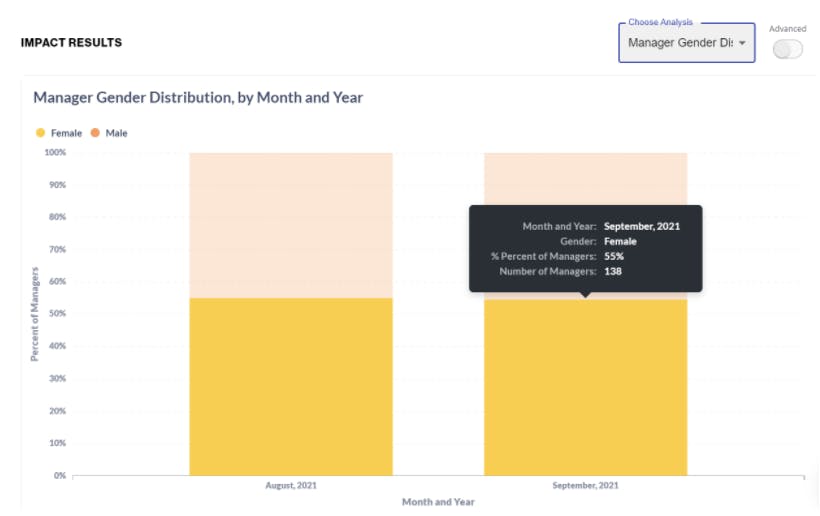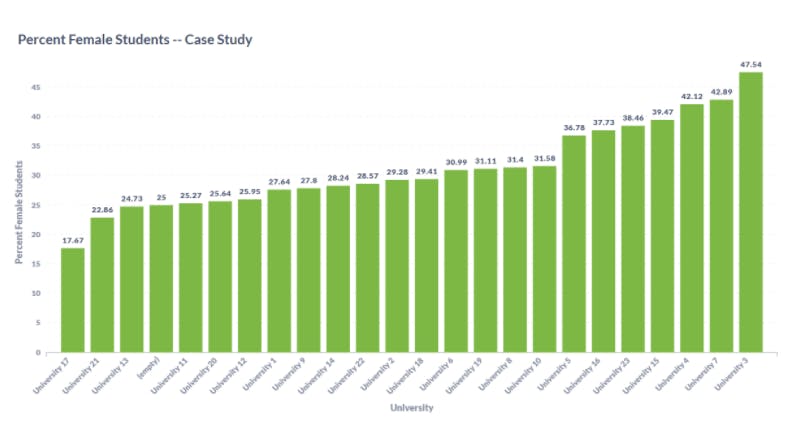ESG & Impact Data in Action: Insights from Shorelight Education

Founded in 2013, Shorelight helps international students attend top universities in the U.S. In February 2021, Shorelight partnered with Proof to enhance its ability to conduct data-driven environmental, social, and governance (ESG) measurement, and more effectively deliver impact for its students, employees, and universities.
In particular, Shorelight wanted to begin objectively tracking and improving on educational and diversity outcomes. In partnership with Proof, Shorelight developed a comprehensive measurement and management strategy, aggregated data across multiple business segments, and set new baselines for its ESG performance to increase accountability across the organization. Now, Shorelight is making ambitious plans to scale its measurement activities and improve its results over time.
As described by Tom Dretler, Shorelight’s CEO, “We have the opportunity to better understand this social impact and make an even bigger difference. Like everything, what gets measured is what gets done. This is why we’ve brought in Proof to help us collect, verify, and analyze our real-time impact data so all of us can have, at our fingertips, a greater sense of the difference we’re making in the world, and the tools we need to create an even bigger impact.”
Strategy Development
The first step in any ESG measurement and management initiative is to develop an overarching strategy that lays out the business’s intention, objectives, and long-term approach. Using Proof's comprehensive digital impact assessment, Shorelight first compared its current organizational practices against the leading industry frameworks, including the Impact Management Project’s (IMP’s) five dimensions, Global Impact Investing Network’s (GIIN’s) IRIS+ system, and United Nation Development Programme’s SDG Impact Standards.
Equipped with the results and guidance from the assessment, Shorelight worked with Proof to develop a holistic ESG and impact strategy, which included a set of objectives and materially relevant metrics designed to track its product service impact (e.g., student progression rate, graduate rate) and operational ESG performance (e.g., minority representation, wage equity, greenhouse gas emissions).
Data System Integrations
With a strategy and metrics defined, it is critical that businesses set up a sustainable, digital system for continuously monitoring their performance over time. To achieve this goal, Shorelight seamlessly integrated its data systems (including payroll, HR, and customer relationship management softwares) into the secure Proof of Impact Catalyst™ Data Management Portal. When direct integrations weren’t possible, Proof of Impact provided Shorelight with central locations for routine, structured data drops easily coded by the Shorelight and Proof data teams. This upfront work to create secure integrations set the stage for streaming data transfer, new analysis across data sets, and automated performance management against a core set of metrics.
Data Validation
To minimize any risks of impact washing, it is imperative that companies partner with third party validators to ensure data integrity. To meet this need for Shorelight, Proof of Impact’s Catalyst™ system independently ran every data point through a pipeline algorithm that pulled from a proprietary catalogue of over 350 validation and verification checks for the highest level of data quality assurance. The validation process checked for completeness, consistency, uniqueness, and anomaly detection to ensure full accuracy and preparedness for external sharing. Shorelight’s data was then pushed through the data pipeline for metric calculation and visualization.
Baselines & Analysis
Without setting a baseline, organizations will not know which ESG issue areas need improvement, or whether they’ve made measurable improvements after making a change in strategy or operations. Prior to its commitment to impact measurement, Shorelight had not systematically established its baseline ESG performance against a set of defined, meaningful metrics. With Proof, Shorelight converted disparate data sets into a centralized location, viewed its baseline performance in simple data visualizations, and actively tracked the effectiveness of its improvement efforts over time.
For example, the data showed that 60 percent of Shorelight’s full-time employees and 53 percent of its managers (i.e., those in leadership positions) identified as female (see dashboard visualization below). These results demonstrate that Shorelight has been effective in its hiring and promotion practices, with majority representation of females in its workforce and leadership roles. Moving forward, Shorelight will monitor changes in the results for any downward trends that may occur, and also expand the definition of this metric to include nonbinary gender tracking.

The data also revealed potential areas of improvement for the Shorelight team. For example, only one-third (33 percent) of Shorelight students placed at US universities identified as female, despite the fact that females comprise nearly 60 percent of the student body at US colleges. Despite cultural norms in the host countries contributing to the disparity, there may be changes to Shorelight’s student outreach and recruiting practices (e.g., tailored messaging or materials, incentives) that could help to increase the proportion of female students. In addition, Shorelight can now easily analyze its metric performance by university to assess whether internal policies and practices among different university teams may explain some of the variation in student gender representation (see sample graphic below).

With its baseline performance established, Shorelight is now working to develop a concrete plan to optimize impact for all of their stakeholders.
Forward Momentum
Using the insights gained from the baseline analysis, the final — and most important step — in the measurement life cycle is developing an action plan for performance improvement. As Shorelight looks to the months ahead, the team plans to take the following steps to finalize and optimize its ESG measurement and performance results:
Finish Baseline Setting: First, Shorelight will finish the process of integrating its operating systems and loading its data into the Proof of Impact platform for the remaining metrics, including those focused on student graduation, wage equity, Board composition, and greenhouse gas footprint (calculated using Proof's GHG Measurement Tool). These new metrics will further equip Shorelight with the ability to pinpoint improvement areas and develop change strategies.
Stakeholder Materiality Assessment: To validate and refine its list of priority metrics, Shorelight will conduct a materiality assessment that collects feedback directly from the organization’s stakeholders (e.g., employees, students, and other groups most impacted). Based on the stakeholder feedback, Shorelight will add to its original metric list and implement new business strategies to improve on the impact and ESG performance of these highest-priority material issues.
Benchmark & Target Setting: Shorelight will assess its performance against industry standards and peers (where available) to help identify core focus areas for change. In addition, Shorelight will set quantifiable targets that it intends to achieve for the highest priority targets, along with detailed plans — described directly on its digital dashboard — to achieve target performance. These will include (but not be limited to) strategies to increase hiring of minorities and previously excluded groups within the US, enhancing student support services for higher GPAs and graduation rates, and reducing (and offsetting) the organization’s greenhouse gas footprint.
As a result of Shorelight’s commitment to ESG measurement and management, the team now has the tools it needs to continuously assess its performance, course correct, and rapidly test new strategies on its journey to become a more sustainable and impactful business. Proof is proud to partner with Shorelight on this mission.


